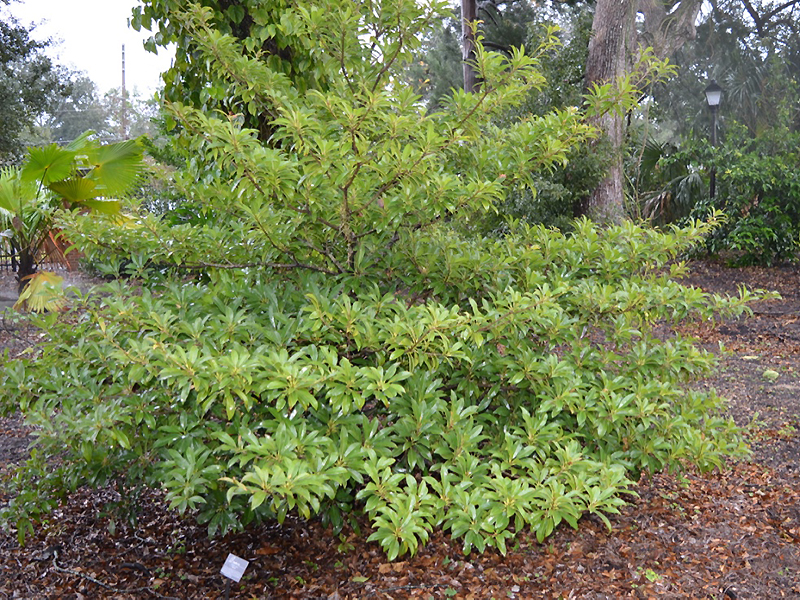
Tropicals, Woody > Manilkara > Manilkara zapota > Manilkara zapota
Manilkara zapota
Sapodilla
Origin: Native to Mexico, Central America and the Caribbean.
| Family |
| Sapotaceae |
| Genus |
| Manilkara |
| Species |
| zapota |
| Category |
| Tropicals, Woody |
| Type |
| Tree (evergreen) |
| USDA Hardiness Zone |
| 10-11 |
| Canadian Hardiness Zone |
| Requires cool season protection under glass. |
| RHS Hardiness Zone |
| H1c-H3 |
| Temperature (°C) |
| -1.1-10 |
| Temperature (°F) |
| 30-50 |
| Height |
| 20-30 m |
| Spread |
| 1.5 m |
Photographs
Description and Growing Information
Flowering Period
| Landscape |
| Ornamental, shade tree or planted for the fruit. |
| Cultivation |
| Tolerates a variety of conditions in wet tropical and dry, cool subtropical climates. Thrives in hot, moist climates in full sun. |
| Shape |
| Tall, pyramid shape but grows into an open-rounded crown as it matures. |
| Growth |
| Slow |
| Habitat |
| Lowland and coastal forests. |
| Leaf Description |
| The leaves are elliptical, glossy and green to 7-15 cm long. They are arranged in spirally on the branch. |
| Flower Description |
| Bell-shaped flowers are pale pink-white. |
| Fruit Description |
| The spherical berries have a rough brown skin and grow 5-10 cm across. The fruit takes 4 months to mature and contain brownish-black seeds. |
| Notable Specimens |
| Harry P. Leu Gardens, Orlando, Florida, United States of America. |
| Propagation |
| Propagated by seed and will germinate after 30 days. |

